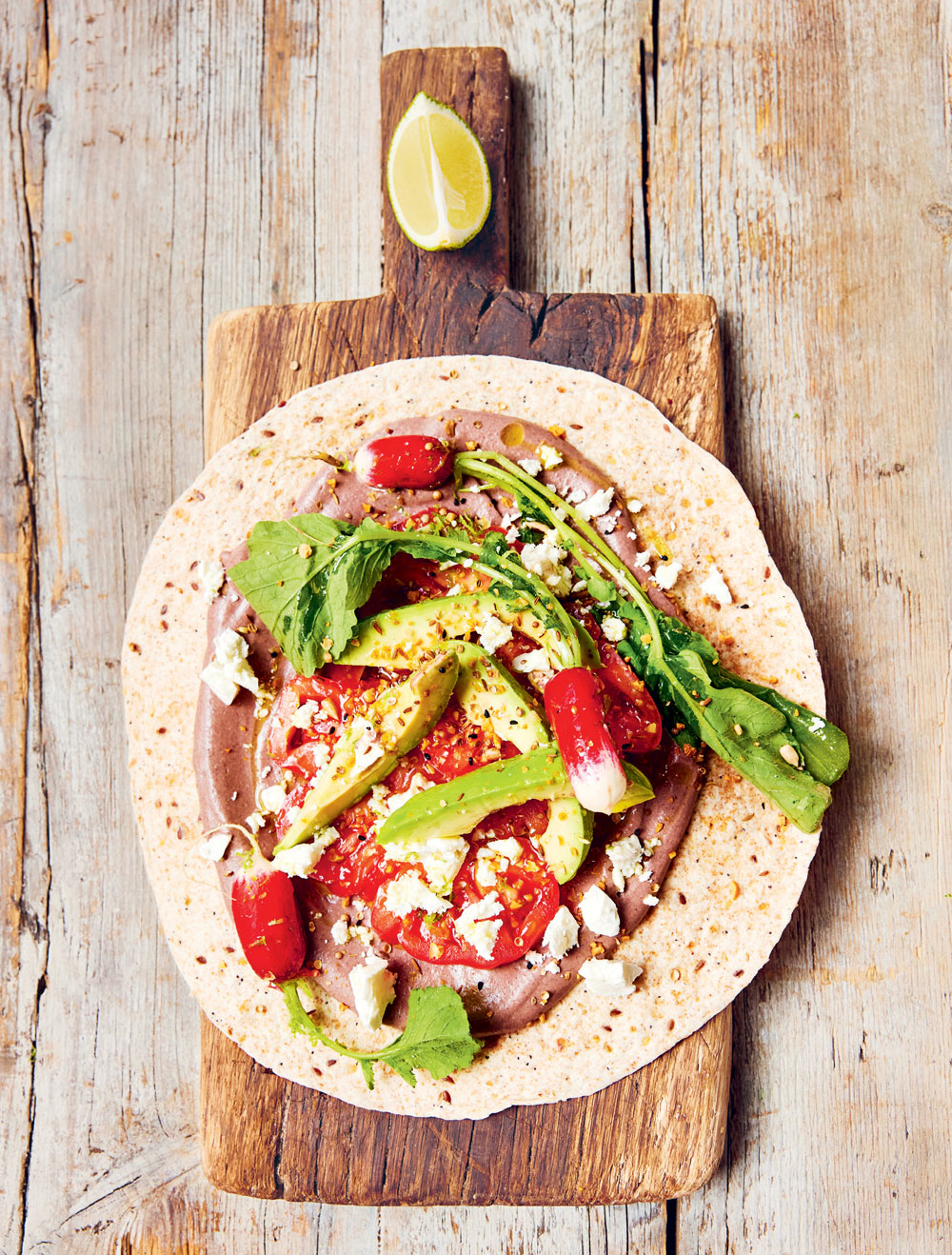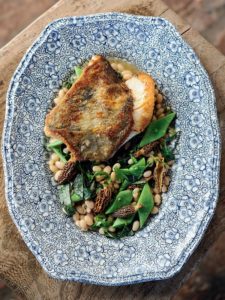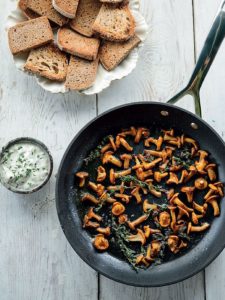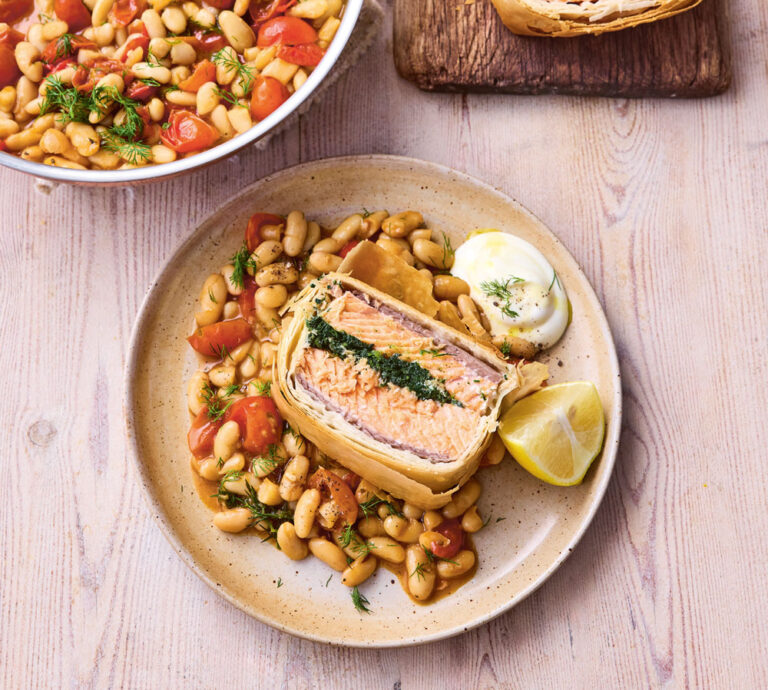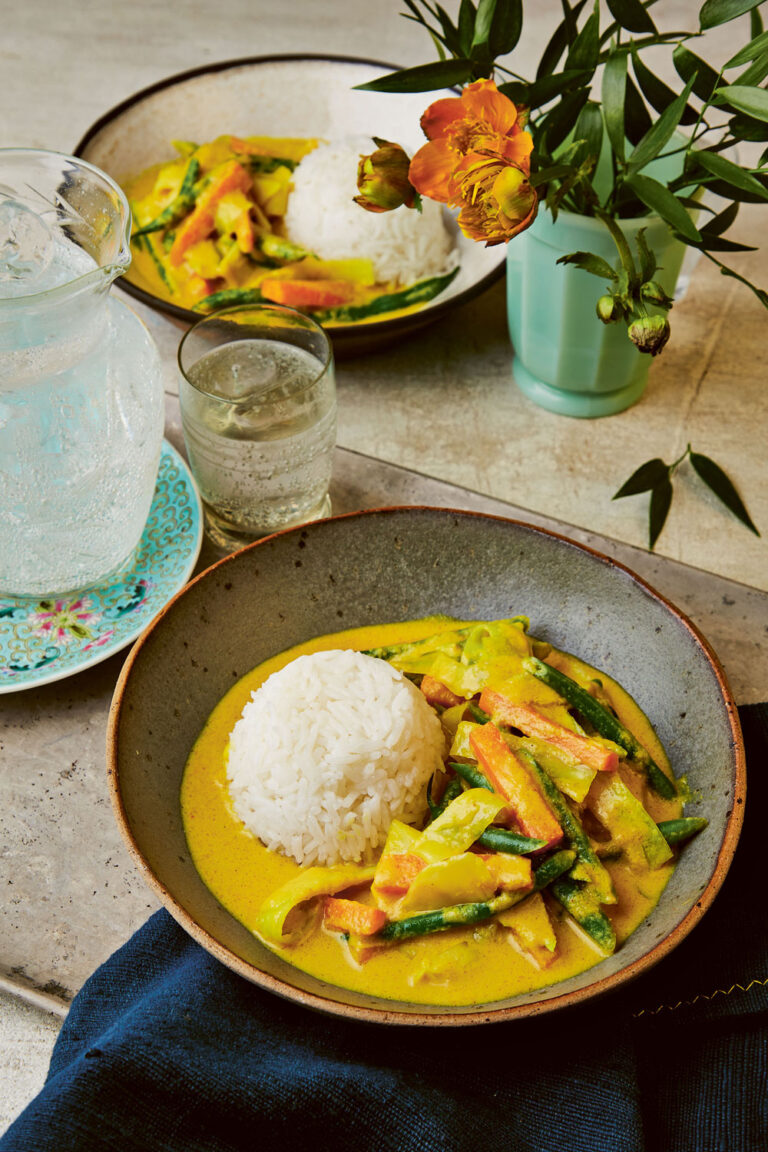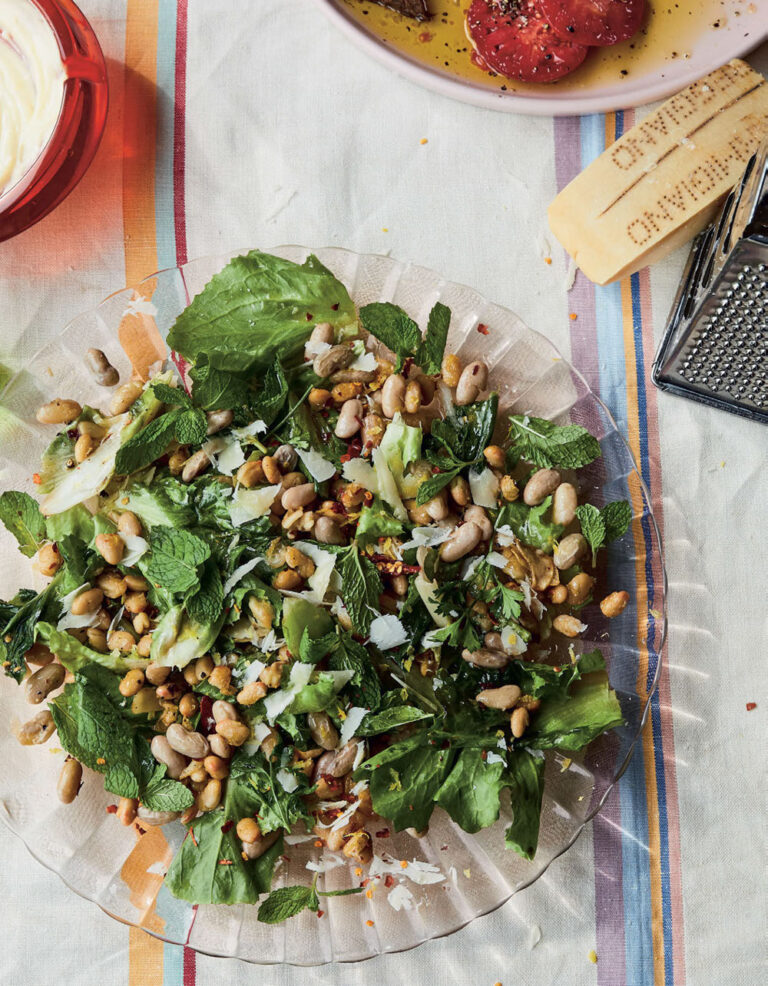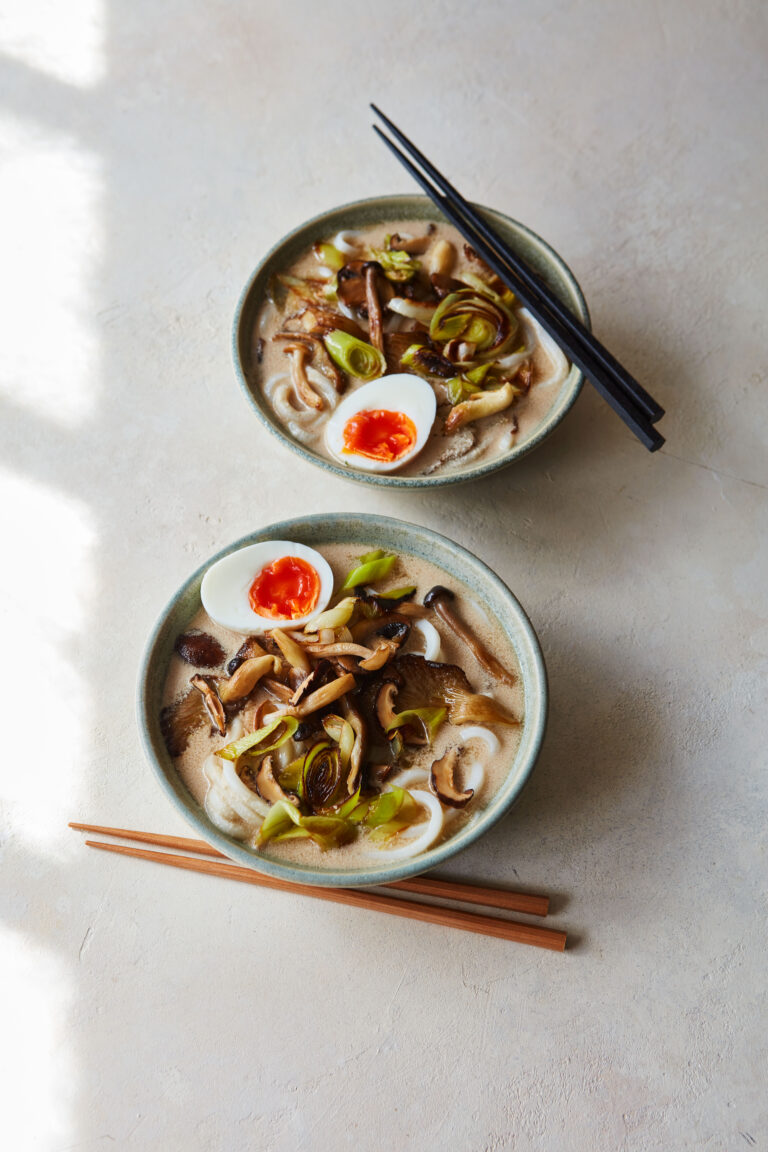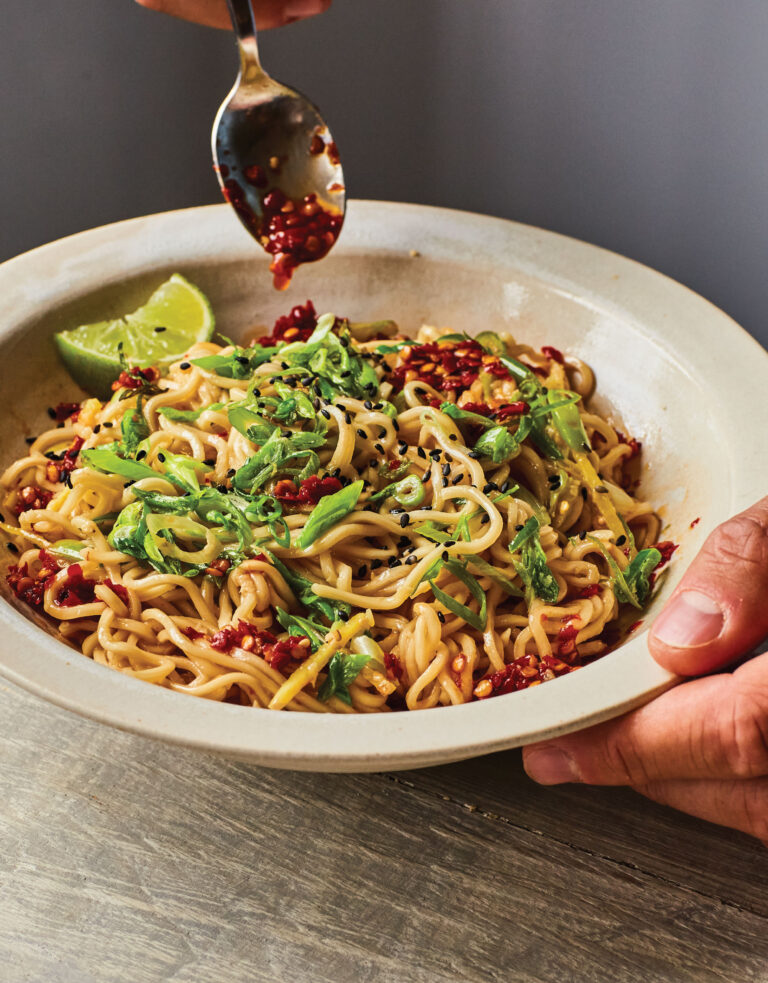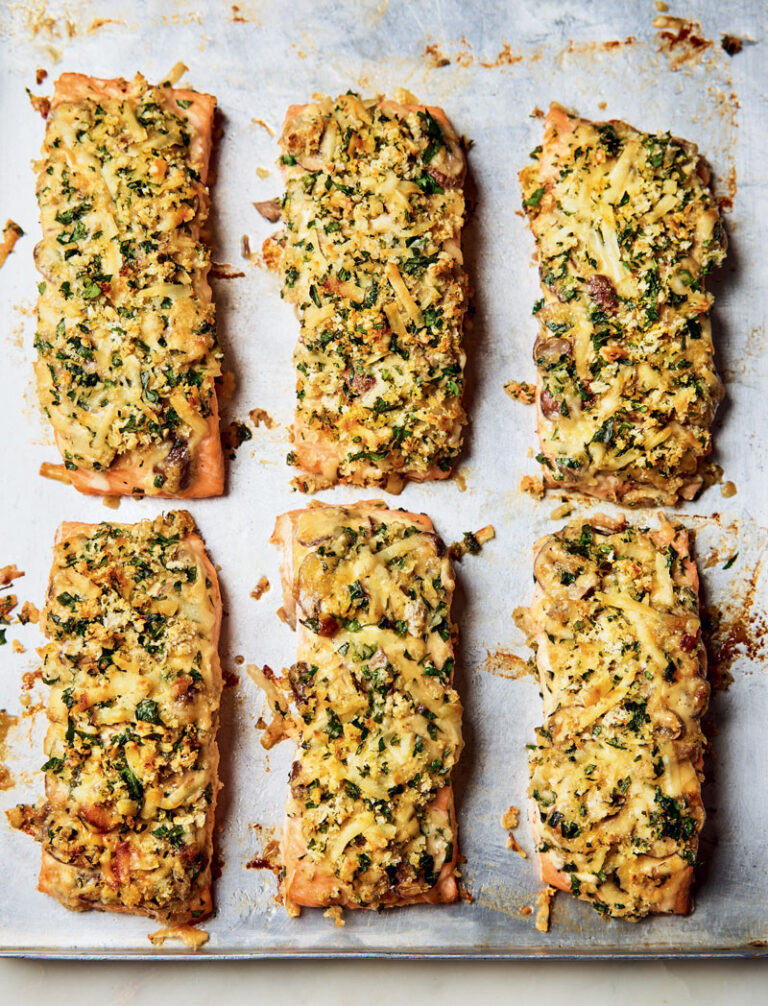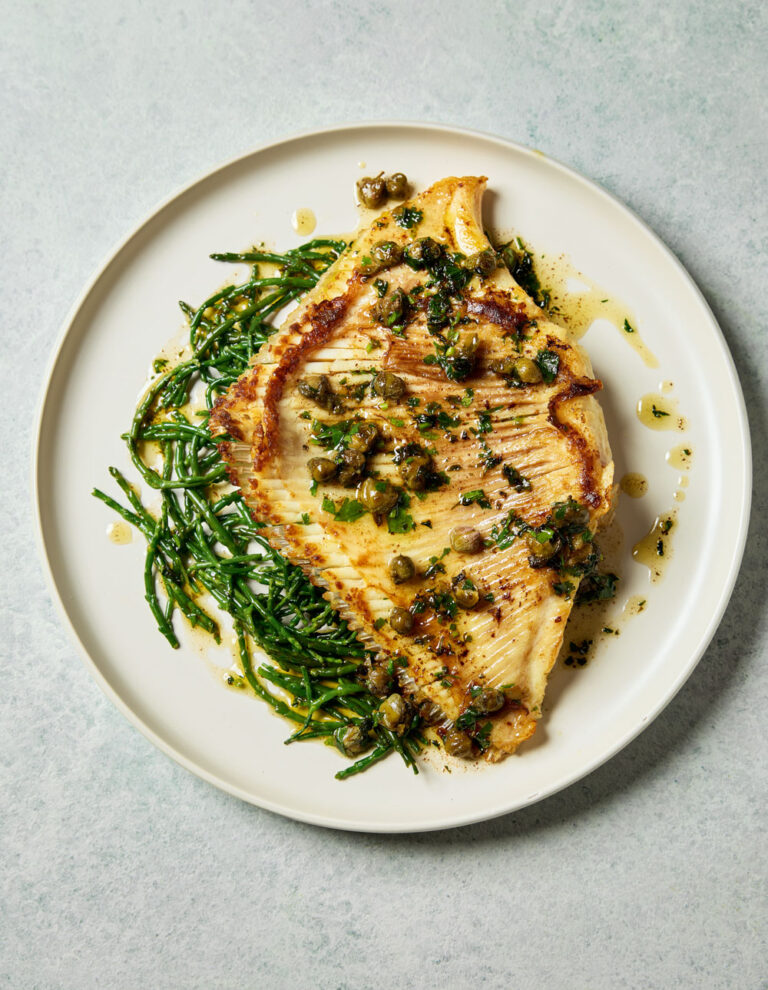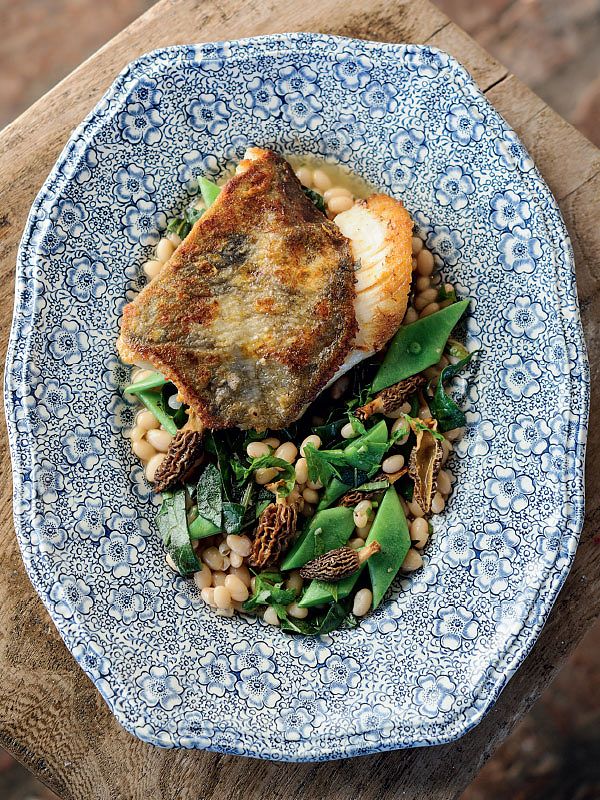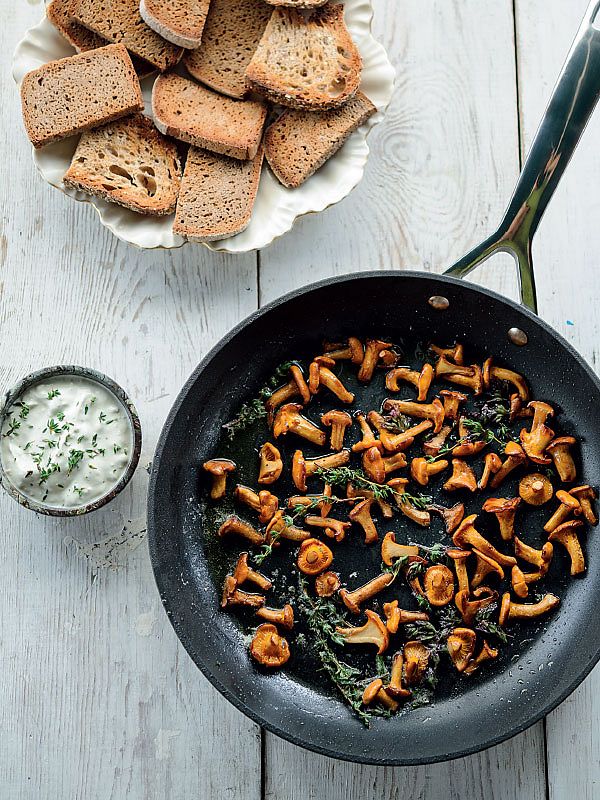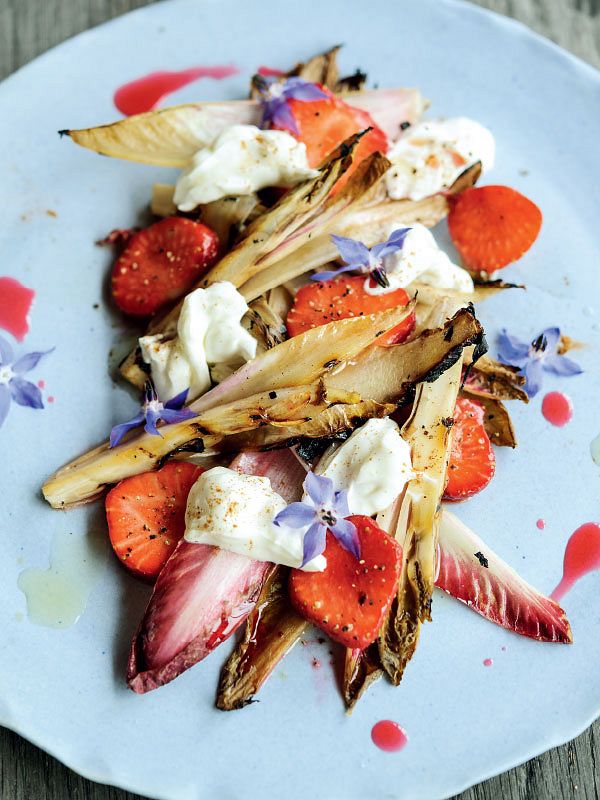Trout with Kelp, Shiitake Mushrooms Stock, Rice, Flat Beans and Sea Kale
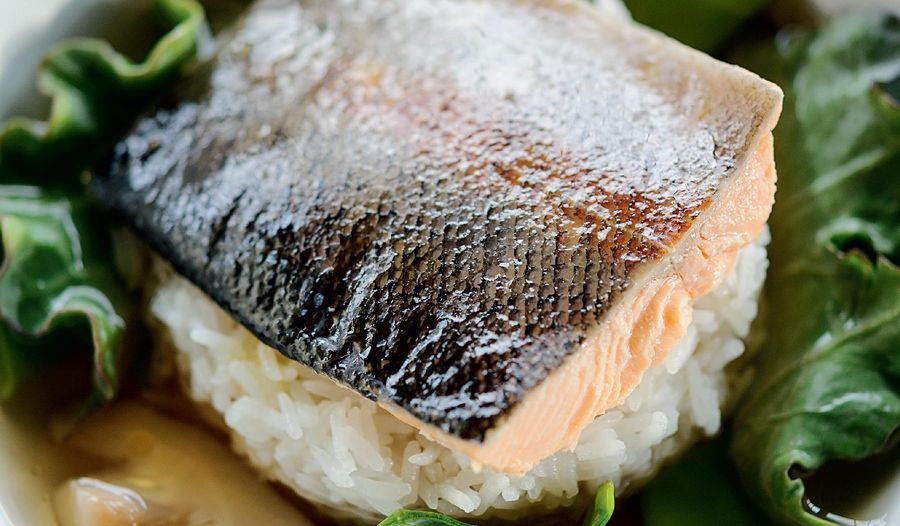
Beautifully cooked trout with a kelp and shiitake mushroom stock. This inventive recipe from The Ethicurean is served with rice, flat beans and sea kale.
From the book
Buy From
Introduction
Finding the best local ingredients is one of the most rewarding tasks for us at The Ethicurean. So we were delighted when Tessa Tricks, part of the Ethicurean family, described how committed her father was to fishing in the local area. Her family’s freezer, we were informed, was always up to maximum capacity with rainbow or brown trout, caught in the nearby Chew Valley or Blagdon Lakes. It was no surprise to hear that they referred to trout as ‘the Trick’s family currency’. Charlie Tricks started fishing at the age of 10 in the River Yeo. He now prefers to fish at the banks of the lake, as he can move around and choose his spot. Bank fishing is more of a challenge but this adds to the excitement when you do eventually succeed in catching something worth cooking.
The Tricks eat trout at least once a week and have developed an impressive catalogue of recipes over the years. It was our task to offer them something new that would fit with our menu. This recipe requires two Japanese-style stocks, which need preparing a day in advance. Unlike European stocks, which often require long cooking, Japanese stocks are quick, lukewarm-water preparations that use umami-rich ingredients such as mushrooms, dried fish and seaweeds (see page 123 for more about 'umami'). The simplicity, freshness and seasonality of Japanese food are qualities that we often try to replicate. Kelp is frequently used in Japanese stocks and in this instance we used native kelp, dried in a very low oven. You should be able to find kelp, labelled as kombu, in oriental markets and healthfood stores.
When Charlie and his family tried this dish, we worried that the delicate ingredients accompanying the fish would not stand up to it, but the table was alive with talk of ribonucleotides in mushrooms, guanylate compounds in umami, and seaweed stocks. By the end of their dinner, the Tricks were committed to attempting brining at home.
Ingredients
| 300g | Basmati rice |
| 40g | sea salt |
| 1 | rainbow trout, weighing 800g-1kg, filleted, with pin bones removed |
| 6 tbsp | mirin (rice wine) |
| 100g | onions, finely diced |
| 50g | celeriac, finely diced |
| 50g | white mushrooms, finely diced |
| 2 | star anise |
| 1 tsp | fennel seeds |
| 200g | flat beans, trimmed and cut into 2cm slices |
| 500g | sea kale (or kale), stalks removed, cut into 3cm strips |
| For the mushroom stock: | |
| 50g | dried whole shiitake mushrooms (the ready-sliced dried ones are much stronger, so reduce to 10g if that is what you have) |
| For the kelp stock: | |
| 20g | dried kelp (kombu) |
Method
First prepare the stocks. For the mushroom stock, wash the dried shiitake, then soak in 600ml cold water overnight in a glass or metal bowl. Don’t worry if your kitchen smells as if there is a gas leak; the pungent shiitake will be the cause. The following day, strain the stock through a piece of muslin and chill.
Rinse the dried kelp of any sand or residue in a bowl of cold water. Be brief, so as not to lose its concentrated flavour. Put 1.2 litres water in a saucepan, set it over a low heat and look out for tiny bubbles appearing on the base of the pan. Turn off the heat, add the kelp, then cover the pan and leave for an hour, switching the heat on again for 3 minutes half way through to maintain the temperature. If you have a thermometer, the temperature should hold close to 60°C. Anything higher will release sulphur compounds, iodine and aldehydes from the kelp, which will taint the sweet and delicate
stock. Strain the stock through muslin, leave to cool, then chill.
Combine the 2 stocks, then measure out 750ml. Set both portions of stock aside.
Wash the rice in a sieve under plenty of cold running water. The aim is to remove all the starch, so keep going until the water runs completely clear. This may take 10 minutes or more but gives perfect rice every time if this step is followed. Stir the rice, rubbing it gently with your fingertips to loosen any remaining starch, then leave to drain. Basmati will absorb one and a quarter times its weight in water during cooking. Even if you don’t possess a rice steamer, beautiful fluffy rice can be achieved
with a saucepan and well-fitting lid. Put the drained rice into a fairly wide pan, add 375ml water, then cover and set aside.
To make a brine, add the 40g sea salt to the 750ml mixed stock and stir until it has dissolved. Cut the trout fillets into 4 even portions per side. Add these to the brine and refrigerate for precisely 20 minutes, then drain. In the meantime, heat the remaining stock to a simmer and then taste it. It will be ever
so subtle and delicate but your tongue will register something specific, something complex yet hard to pin down. The elusive umami taste, the essence of Japanese cooking is present, yet
very delicate. Add the mirin and then add salt, a pinch at a time. Taste again and notice how the sweetness and salt have added depth. Season gradually until you are pleased with the balance.
Put the pan of rice over a high heat and watch for it to come to the boil. The moment it does, add a teaspoon of salt and stir. Cover the pan tightly and reduce the heat to low. Cook for 10 minutes, resisting the temptation to peer into the pan. The idea is to try to mimic a rice steamer, so the steam needs
to be trapped by the lid. After 10 minutes, turn the heat off but leave the lid on for a further 10 minutes. Continue to resist the temptation to peer in! Heat the oven to 120°C/GasMark ½. Boil a kettle and pour the water into a deep baking tray to a depth that will cover the fish fillets comfortably. Add the onions, celeriac, mushrooms, star anise, fennel seeds and the drained fish fillets. Place in the oven and leave for ten minutes.
Blanch the flat beans in a pan of boiling salted water for 2 minutes and the sea kale in a separate pan for 1 minute, then drain. Run a fork over the rice to loosen the perfectly cooked fluffy grains, then divide it between 4 serving bowls and arrange the greens around it. The fish will be delicately poached by this point. Put the fish fillets on top of the rice and pour the clear stock around the outside. A five-stage palate pleaser for certain.
Reviews
Have you tried this recipe? Let us know how it went by leaving a comment below.
Our team is taking a break over Christmas and may be slower to respond to your comments or queries. We apologise for any inconvenience this may cause.
Please note: Moderation is enabled and may delay your comment being posted. There is no need to resubmit your comment. By posting a comment you are agreeing to the website Terms of Use.
